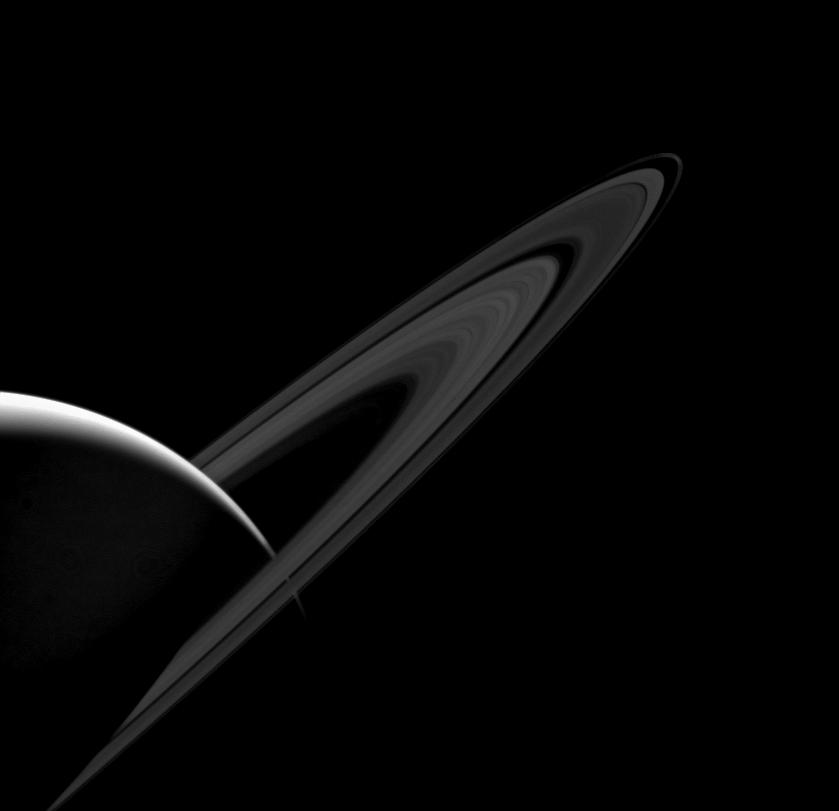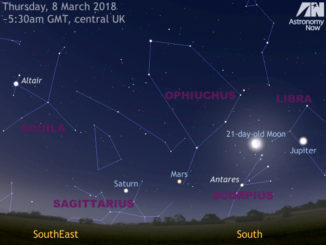
Saturn’s main rings, seen here on their “lit” face, appear much darker than normal. That’s because they tend to scatter light back toward its source – in this case, the Sun.
Usually, when taking images of the rings in geometries like this, the Cassini probe uses exposure times that are increased to make the rings more visible. Here, the requirement to not over-expose Saturn’s lit crescent reveals just how dark the rings actually become. Scientists are interested in images in this sunward-facing (“high phase”) geometry because the way that the rings scatter sunlight can tell us much about the ring particles’ physical make-up.
This view looks toward the sunlit side of the rings from about 6 degrees above the ringplane. The image was taken in visible light with the Cassini spacecraft wide-angle camera on January 12, 2014.
The view was acquired at a distance of approximately 2.3 million kilometres (1.4 million miles) from Saturn and at a Sun-Saturn-spacecraft, or phase, angle of 152 degrees. Image scale is 138 kilometers (86 miles) per pixel.



